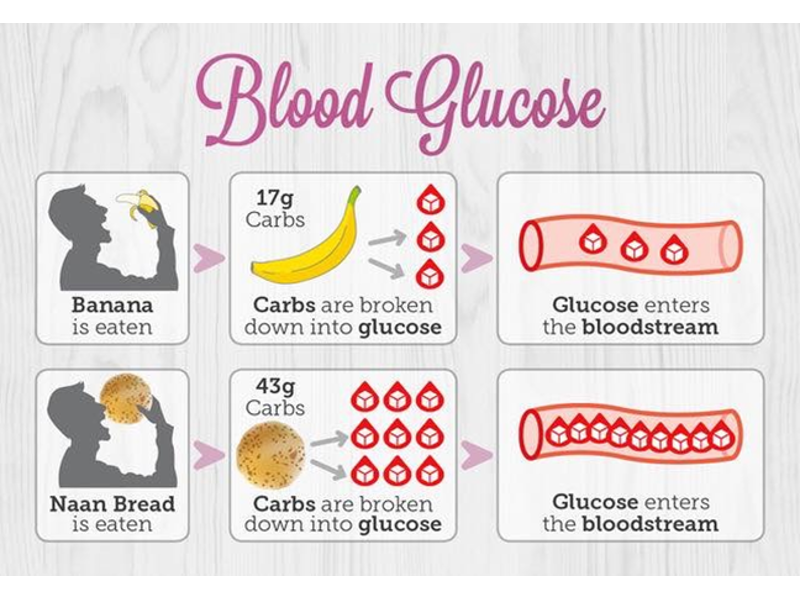Understanding carbohydrates
More and more people are getting a better understanding of carbohydrates.
Understanding carbs is an important first step if you want to lose weight and improve your blood glucose levels.
Carbohydrates are one of the body’s main sources of energy and consist of two main types. These are:
- Sugars, which are found in sweets, cakes, pastries, fruit juices and energy drinks; and
- Starches, which are long chains of sugar joined together. These are found in foods such as cereals, rice, potatoes, bread, pasta, yam, plantain, dumplings, noodles and African foods such as fufu.
When starch is digested it’s broken down into glucose and enters your bloodstream, increasing your blood glucose level. Limiting the amount of sugars entering your body whether as sugar or starch can have a positive impact on your health, as it can help you to limit the amount of sugar that your body stores as fat. This in turn can help keep your weight under control and reduce your risk of developing type 2 diabetes.


Being at high risk of type 2 means your metabolism can no longer deal with sugar, which becomes almost like a poison to your body
You can reduce your blood glucose levels, by reducing your sugar intake (and this includes starchy carbs).
Studies have shown that lowering carbohydrate intake from starchy and sugary foods can promote weight loss which in turn can reduce your risk of developing type 2 diabetes.
Carbohydrate content in common foods
Sweet and starchy carbohydrates all increase your blood sugar level.
In the images on these pages, one drop of blood with a sugar cube represents a teaspoon of sugar or around 5g of carbohydrate.

Sometimes the amount of carbohydrate in one meal can be shocking. For example, a few pieces of bread or plate of pasta or rice could contain the equivalent of more than 15-20 teaspoons of sugar.
All the excess sugar is then mostly stored as fat and can cause weight gain.
One meal can be the equivalent of over 18 teaspoons of sugar (each drop of blood with a sugar cube in is equivalent to a teaspoon of sugar in the pictures).
If I count up the number of teaspoons of sugar I'm eating each day through starchy or sweet foods, what is this telling me? What action can I take?
Some African and Caribbean foods contain very high amounts of starchy carbs, for example a meal with rice and plantain or a meal with fufu could result in you eating starchy carbs equivalent to more than 25 teaspoons of sugar in one meal.
Reducing carb content
You can reduce your carb intake through:
- reducing carb portion size
- making health swaps
- a combination of both
Reducing carb content will generally mean you will be eating more:
- Vegetables that grow above the ground: eat as much as you can.
- Protein: non-processed meat, chicken, eggs, fish (particularly oily fish like salmon and mackerel).
- Healthy fats: olive oil, nuts, seeds, avocados. Avoid margarine, corn oil, vegetable oil.
- Dairy: Use full-fat options like Greek yoghurt, real butter, cream, sour cream and cheeses. Avoid flavoured, sugary and low-fat products.
Eating lots of vegetables with protein and healthy fats leaves you feeling properly full in a way that lasts.
Healthy swaps often mean cutting down bread, rice, cereal or pasta portions


Meal ideas
|
Meal |
Eat more |
Eat less |
|
Breakfast |
Eggs, full fat yoghurt, avocados, fish, berries |
Toast, bread, cereals, bananas |
|
Lunch |
Salads, fish, chicken, cheese, beans, nuts, seeds, olive oil |
Bread, rice, pasta |
|
Dinner |
Cauliflower rice, green vegetables, beans, meats, chicken, fish |
Rice, bread, pasta, potatoes, yam, plantain |
|
Snacks |
Try and avoid snacking but if you need something then nuts and seeds are good |
Crisps, crackers |













